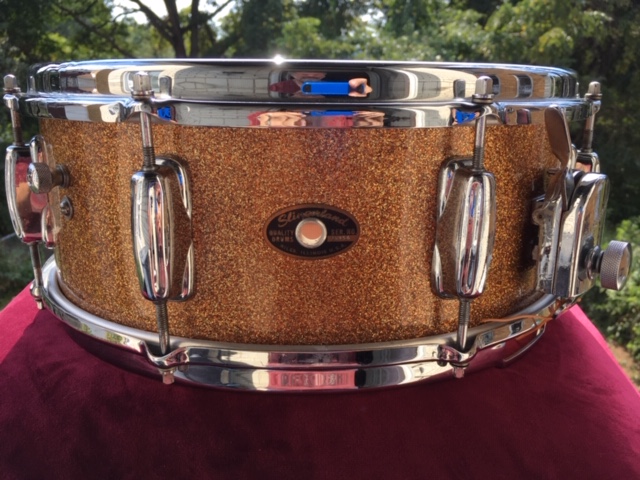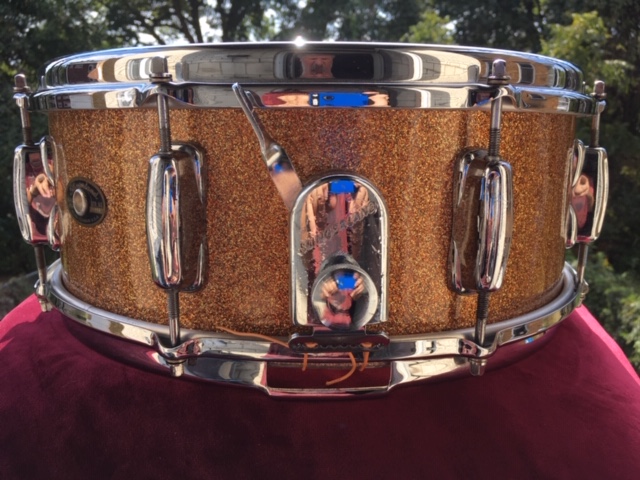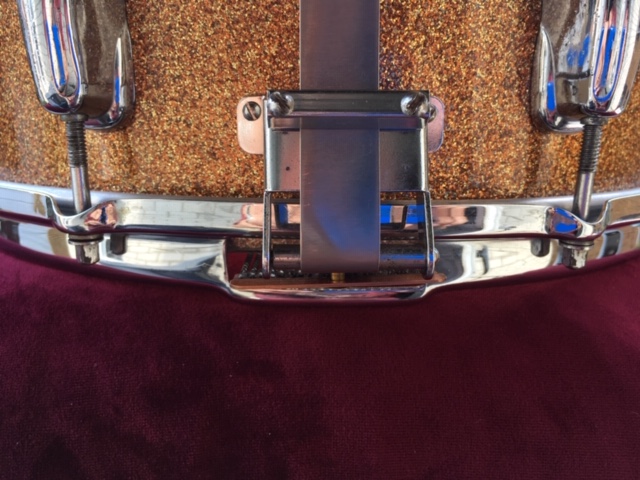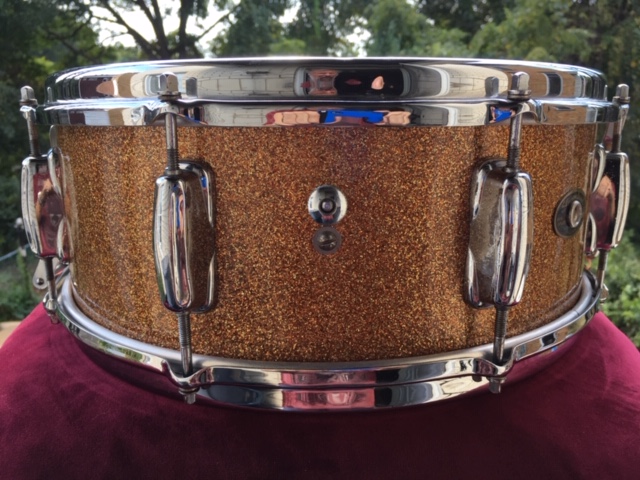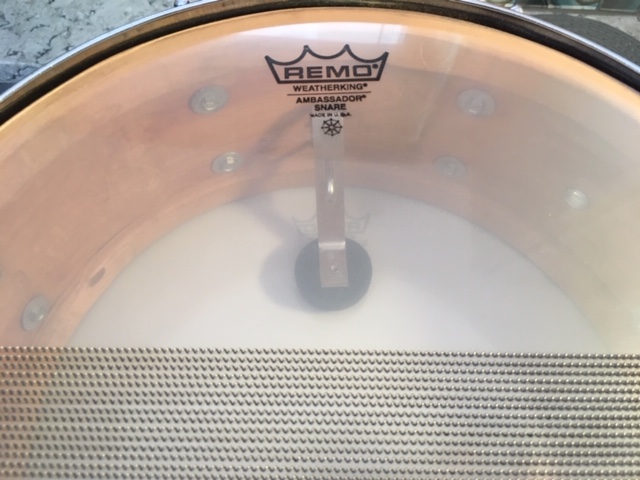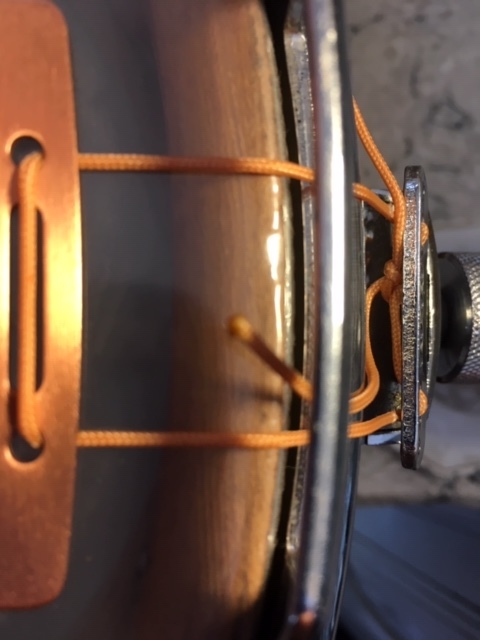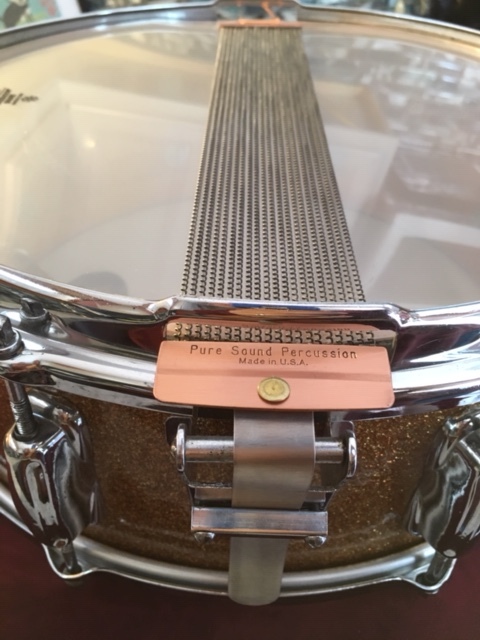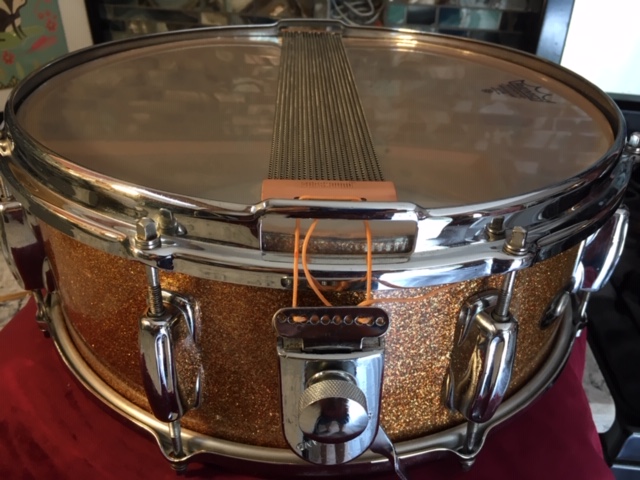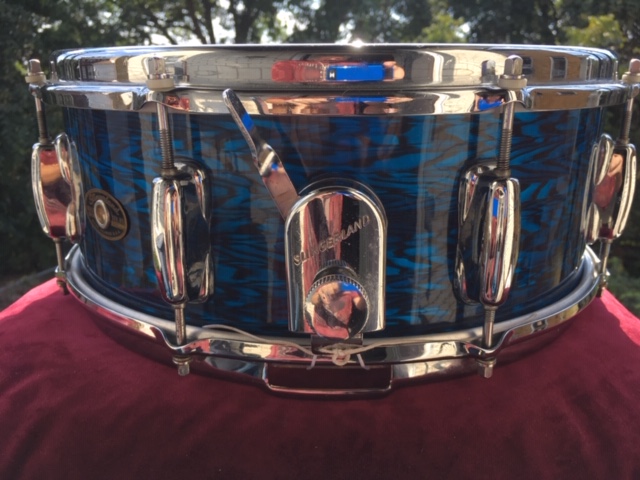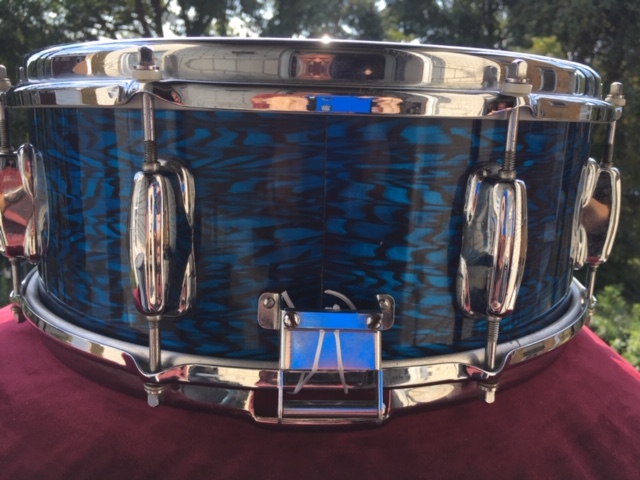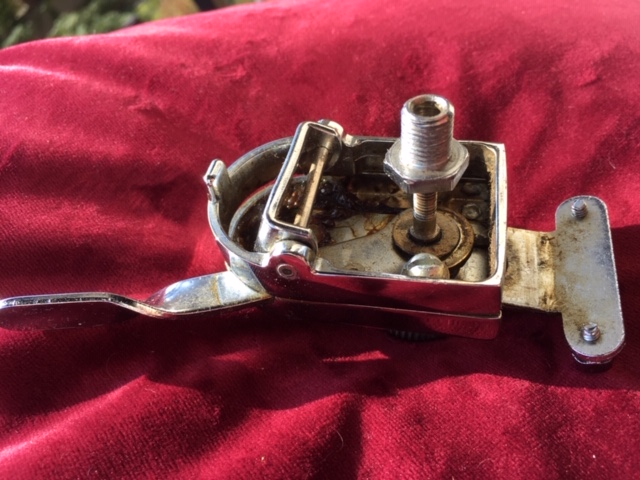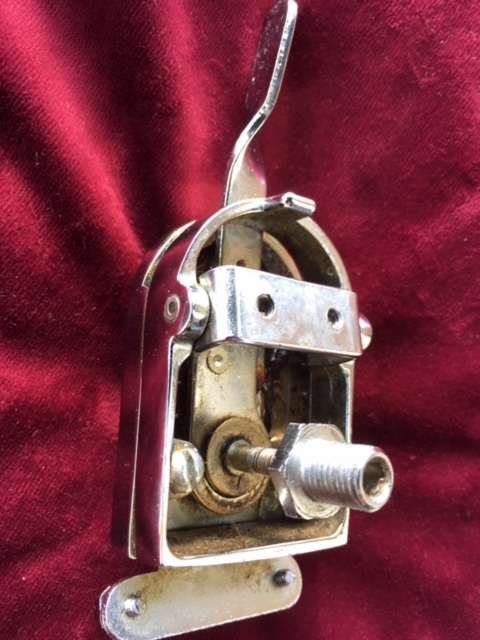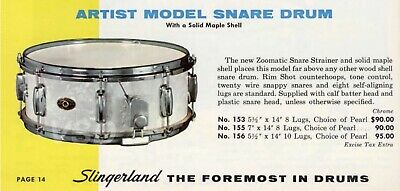In 1963 the Slingerland Drum Company introduced a new snare drum. This snare was cataloged and advertised as the new Modern Artist model. Slingerland had used the Artist model name on their earlier snare drum line from 1928 to approximately 1935. Some of these first models were hand engraved and very ornate. They were made with ten tube lugs and with both solid wood and brass shells.
Slingerland’s catalog described this new Artist model: ”The Zoomatic strainer system and solid maple shell places this drum far above all other wood shell snare drums”. The Zoomatic strainer became their top of the line throw-off. At that time, Slingerland was the only American drum manufacturer offering a one ply solid maple shell. The Artist model was available in three options: 5.5x14 and 7x14 shells with eight lugs and a 5.5x14 ten lug model in a variety of sparkling pearl finishes as well as the exotic finish. The Artist solid maple shell was made exactly the same as its Radio King predecessor. The bearing edges were made with much more precision than the older solid shells.
By late 1962 into 1963, Slingerland phased out the Super Gene Krupa model with its clam shell strainer system, replacing it with this new Zoomatic system with the extended butt plate. The Zoomatic throw off has a dialed-in knob adjuster with a complex internal mechanism for ultra-fine tuning. The first Zoomatic resembled a tomb stone and is sometimes referred to by vintage drum collectors as a tomb stone strainer.
There were two variations made in the 1960s. The first generation Zoomatic strainer was attached to the shell with two machine screws. A center receiving nut with internal female threads accepted a male threaded shaft-spline that was pressed onto the outside adjuster knob. The snare tension can be adjusted by moving the knob left to right. The entire mechanism is held inside a semi-round metal housing. This tension knob pulls tension on the snare wires with left handed (reversed) threads. Turning the knob counterclockwise tensions the snare wires. Turning the knob clockwise loosens the tension of the snare wires. As time passed, this design proved to be troublesome to drummers. This was caused by over tightening the threaded shaft and internal parts. Many knobs came loose from the spline and shaft. They were cast aside or eventually lost. This is why you see many Artist models without the strainer adjustment knobs.
The snare lever design is very practical and can be thrown on and off with the flick of a stick. The external handle is connected to an internal round fulcrum unit which allows for easy ratchet adjustments. This fulcrum is attached to a piston for lever adjustment. These parts are packed with grease which prevents friction and allows for smooth action.
In, 1964 Slingerland introduced a redesigned second generation Zoomatic strainer that addressed some of the issues. They added a tab extension to the top back of the strainer housing. This stop prevented the whole strainer from tilting severely backwards, preventing both threads from cross threading or stripping out.
The extended butt plate design was a carry over from the Leedy Broadway Snare Drum. The C.G. Conn Company offered both Leedy & Ludwig Drum divisions for sale after a loss of sales and profits. In 1955 Slingerland and WFL made a deal to purchase and acquire the Leedy & Ludwig Drum Companies. This deal was made so WFL-Ludwig could buy back their rights legally and use the Ludwig name once again. Also, Slingerland benefited by acquiring the Leedy tooling, machinery and leftover parts for revamping the Leedy drum line.
The new Slingerland extended butt plate made a significant contribution to the tone of the new Artist model. This allowed the snare wires to extend across the bottom head and past the snare bed on one side. The result was a more sensitive snare response.
In 1964 a 3 ply Artist model was introduced alongside solid maple shell version. Slingerland continued producing these models with both solid and ply wood shells, eventually phasing out the solid maple shells.
The eight lugs are center Sound Kings. These lugs were made of a stronger grade metal alloy for strength and high tensioning. The hoops are chrome over brass Stick Savers. The 1960s Artist model snare drums have recently become highly sought-after. You may be quite fortunate to find one in a rare exotic finish. If you desire the great sound of a solid shell 1940s Radio King the later 1960s “Artist” model delivers the best of both worlds.
(Editor’s note: solid shell = single ply steam bent shell in this article. They are actually two different shell types. A solid shell is a log that is hollowed out, but solid is commonly used vernacular to denote a single ply steam bent shell.)

